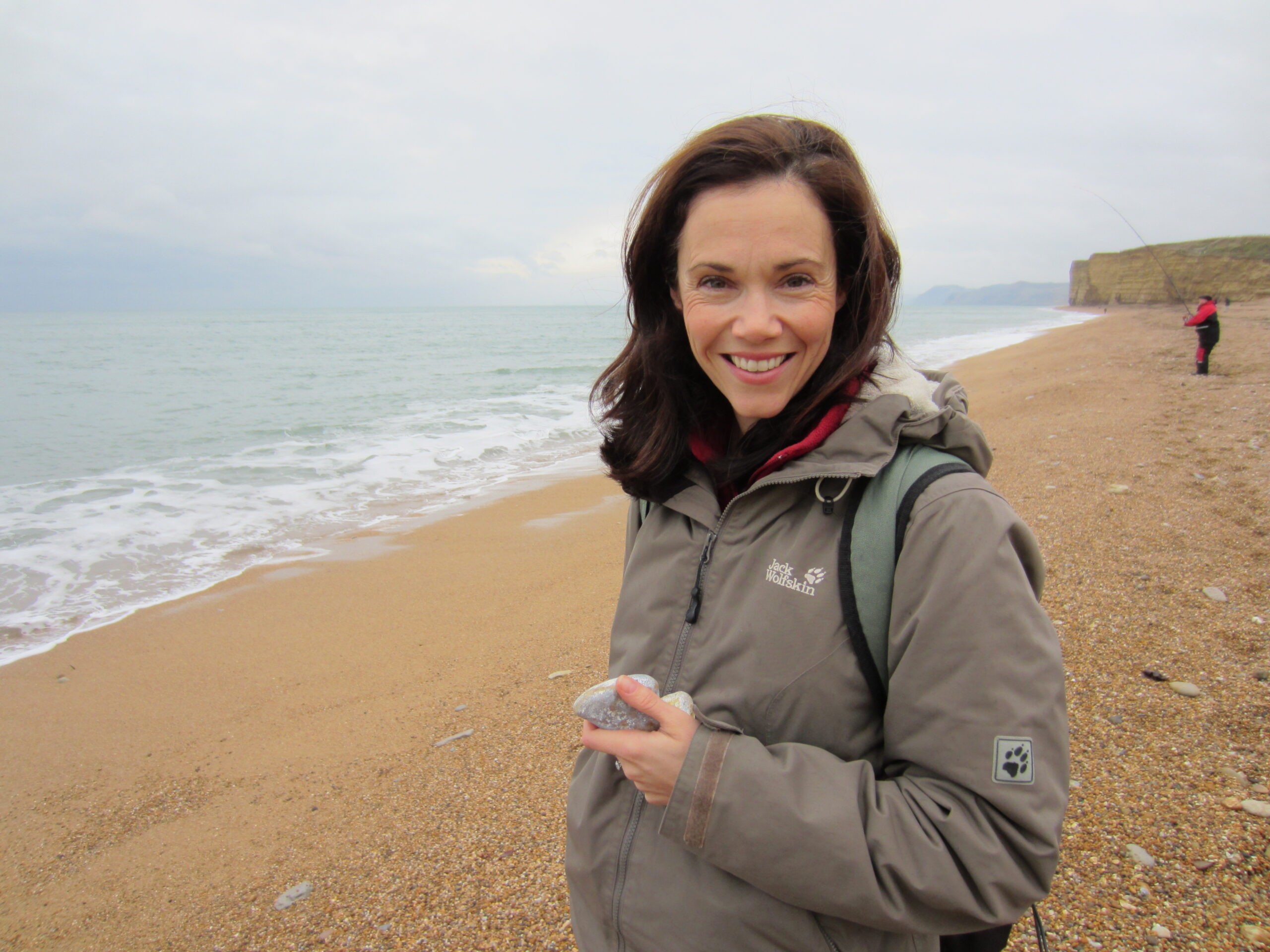Finding a fossil is an exciting way to connect with the past, and on beaches all around Britain, with a bit of luck and patience, you can unearth a creature that lived millions of years ago.
Winter is the best time to hunt for these natural treasures as stormy seas churn up beach sediments creating a ready supply of new fossils just waiting to be discovered, but you can try your luck at any time of year – just be sure to take care when hunting near cliffs.
In this BBC Countryfile Magazine guide, Hermione Cockburn – fossil enthusiast and Scientific Director at Dynamic Earth – reveals 10 of the most common types of fossils found in the UK, from the Jurassic Coast in Devon and Dorset to Herne Bay in Kent and Abereiddy Bay in Pembrokeshire.
Where are the best places to find fossils?
There is nothing more exciting than taking a walk along the beach and stumbling across a fossil that dates back hundreds of millions of years. It’s an outdoor experience perfect for children of all ages, and it continues to delight adults, too. But where are the best places to find fossils near you?
10 common fossils found in the UK
Ammonites
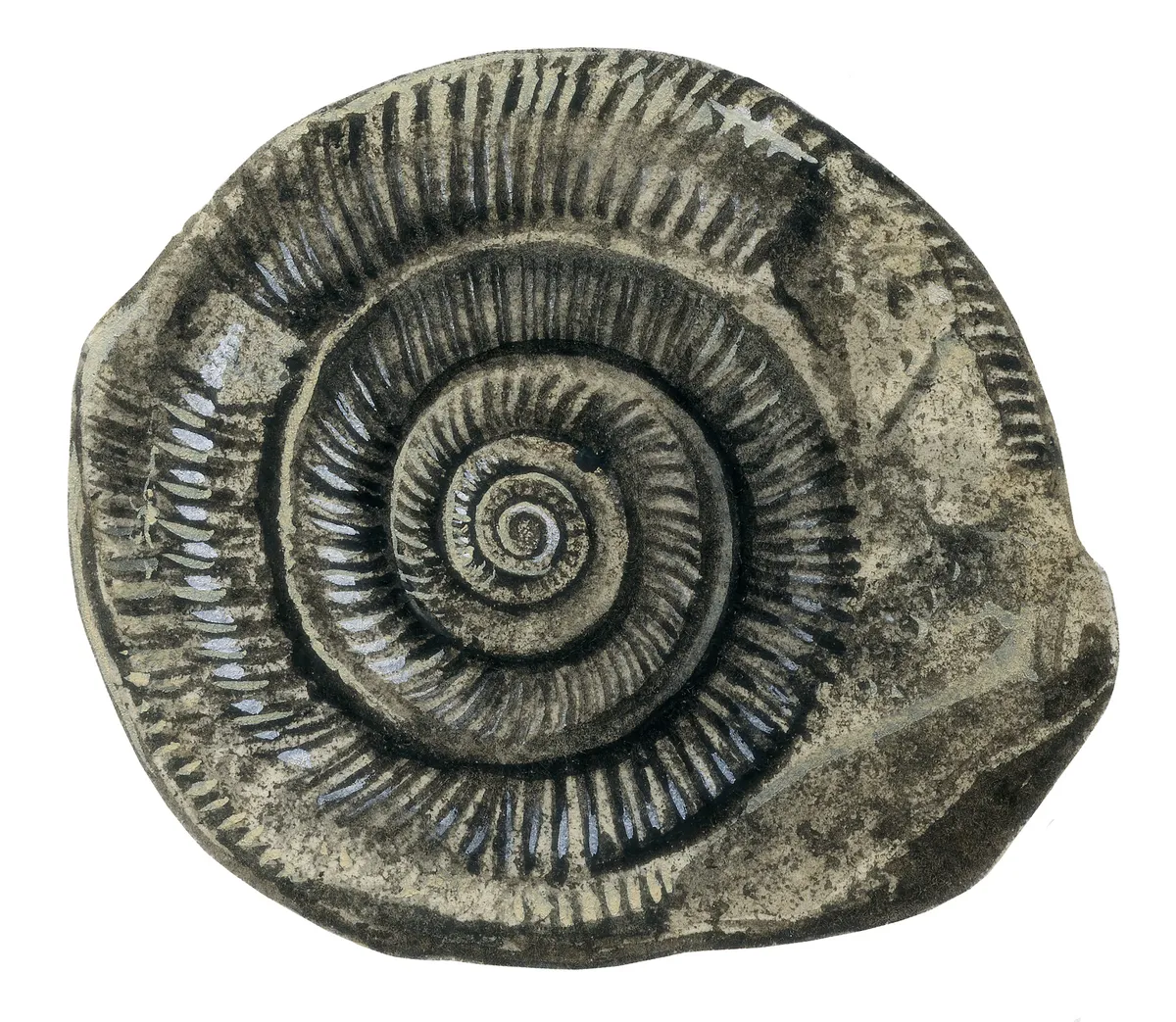
Ammonites, and their beautiful coiled shells, are extinct animals that lived in shallow seas more than 65 million years ago. Their fossilised shells were once thought to be petrified serpents and known as ‘snakestones’. This legend probably originated in Whitby, and the North Yorkshire coast is still one of top places to find them. Ammonites range in size from a few mm to more than a metre in diameter.
Visiting Charmouth?
Enjoy an ancient treasure hunt for fossils, discover a delicious fish bar and explore a wild windswept beach along this rugged, ever-changing shoreline on the Jurassic Coast.
Belemnites
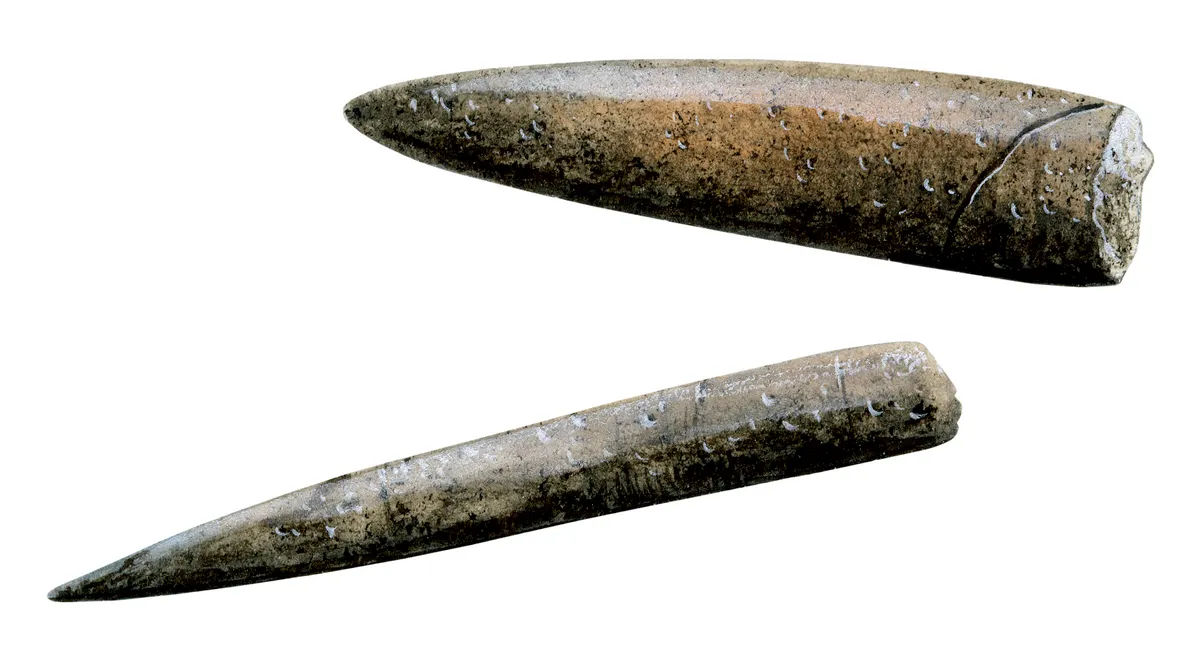
Belemnites are extinct squid-like animals, but unlike living squid, they had an internal pointed shell called a guard. These guards form bullet-shaped fossils, typically 5-15 cm long, that can be found on beaches right along much of southern and eastern England. The name ‘belemnite’ comes from the Greek for dart or javelin, and in mediaeval times they were popularly called ‘thunderbolts’.
Shark Teeth
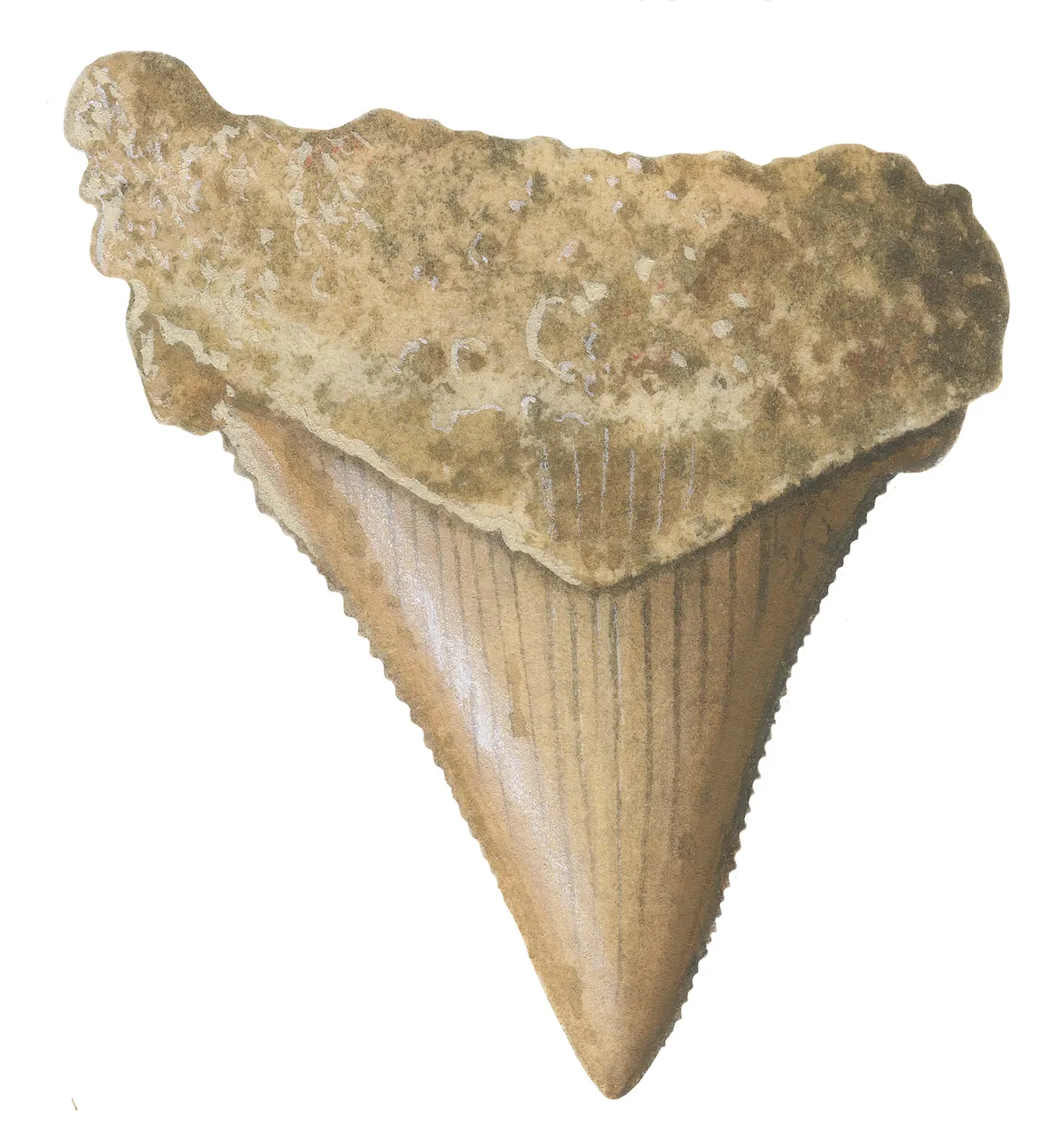
Sharks have been around for more than 400 million years and although their soft cartilage skeletons rarely fossilise, shark teeth are one of the most common fossils you can find. They are usually about 2-3 cm long with a shiny point and a rougher, arc-shaped base. Some of the best beaches to find them are in Essex and along the north coast of Kent near Herne Bay.
Looking for more shoreline treasures?
Extraordinary and beautiful treasures can be found along the British coastline. Our expert guide to beachcombing includes things to look out for, how to get started and the best beaches for beachcombing in the UK.
Crinoids
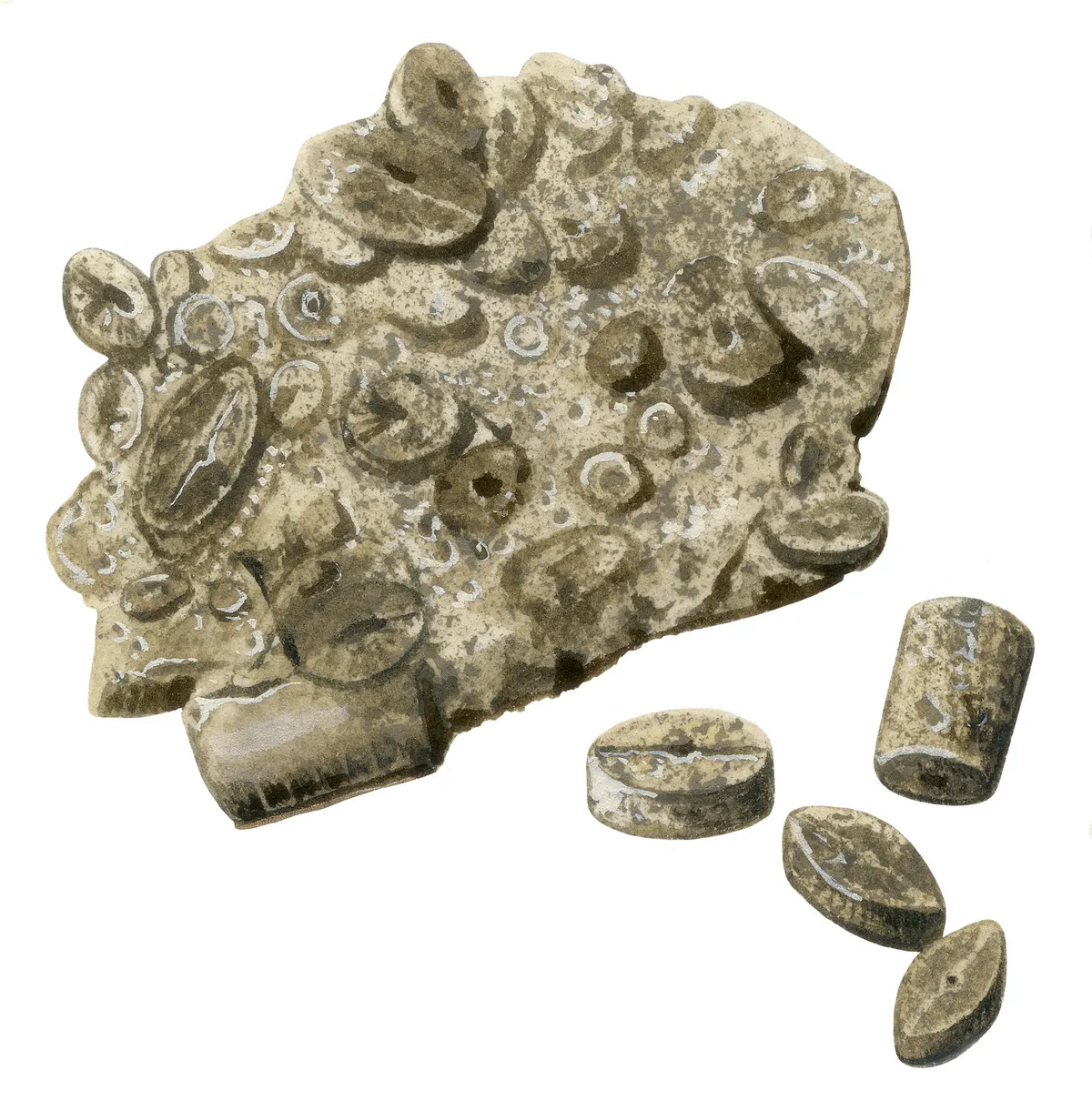
Crinoids are sea creatures that are often called ‘sea lilies’ as they look like flowers. They live connected to the seabed by a stem made of small plates with soft branching arms that filter food from the surrounding water. Crinoids still live in the ocean, but were more abundant and diverse in the past. Some rocks consist almost entirely of crinoid stem fragments.
Bivalves
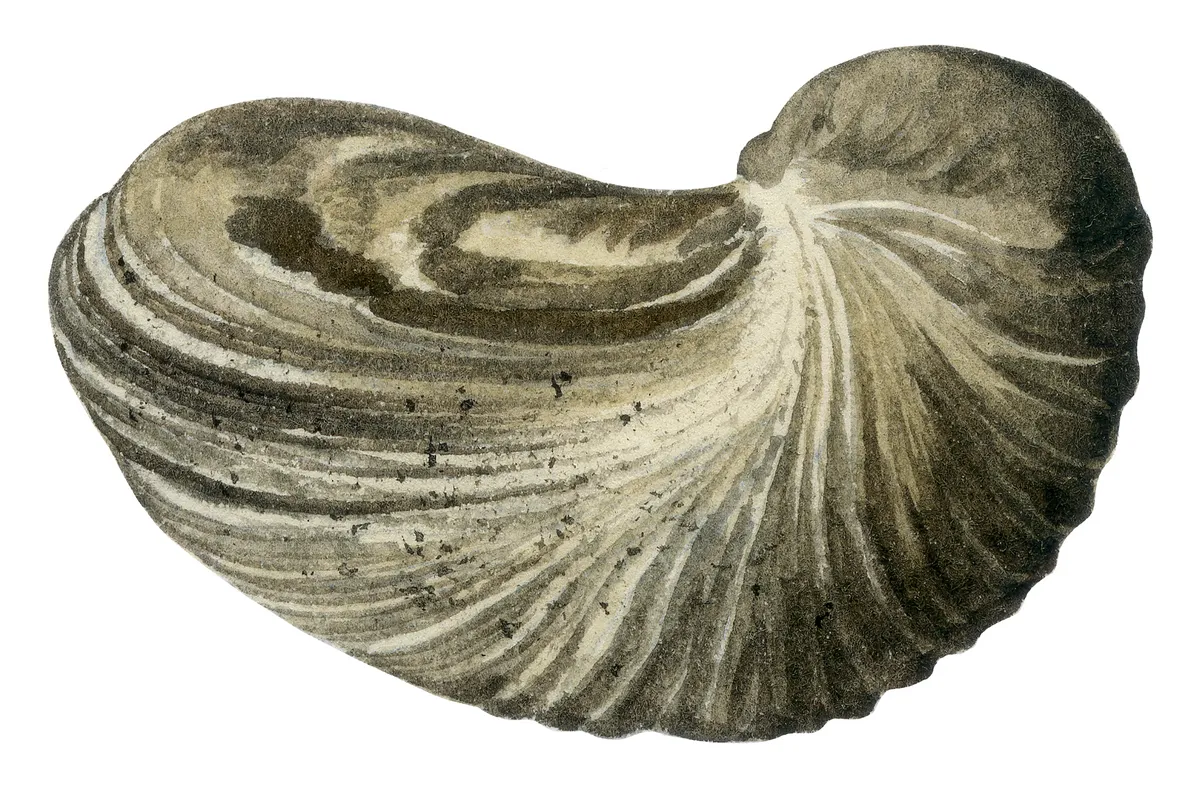
Bivalves are molluscs, like modern-day mussels and oysters, with two hinged shells (called valves) that cover a soft body. They are common throughout the fossil record. One particularly distinctive fossil bivalve is the extinct Jurassic-aged oyster gryphaea. Their gnarly-shaped, grey or black fossilised shells are about 5-10 cm long and known as ‘Devil’s toenails.’ Exactly why this is remains a mystery!
Dinosaurs and ichthyosaurs
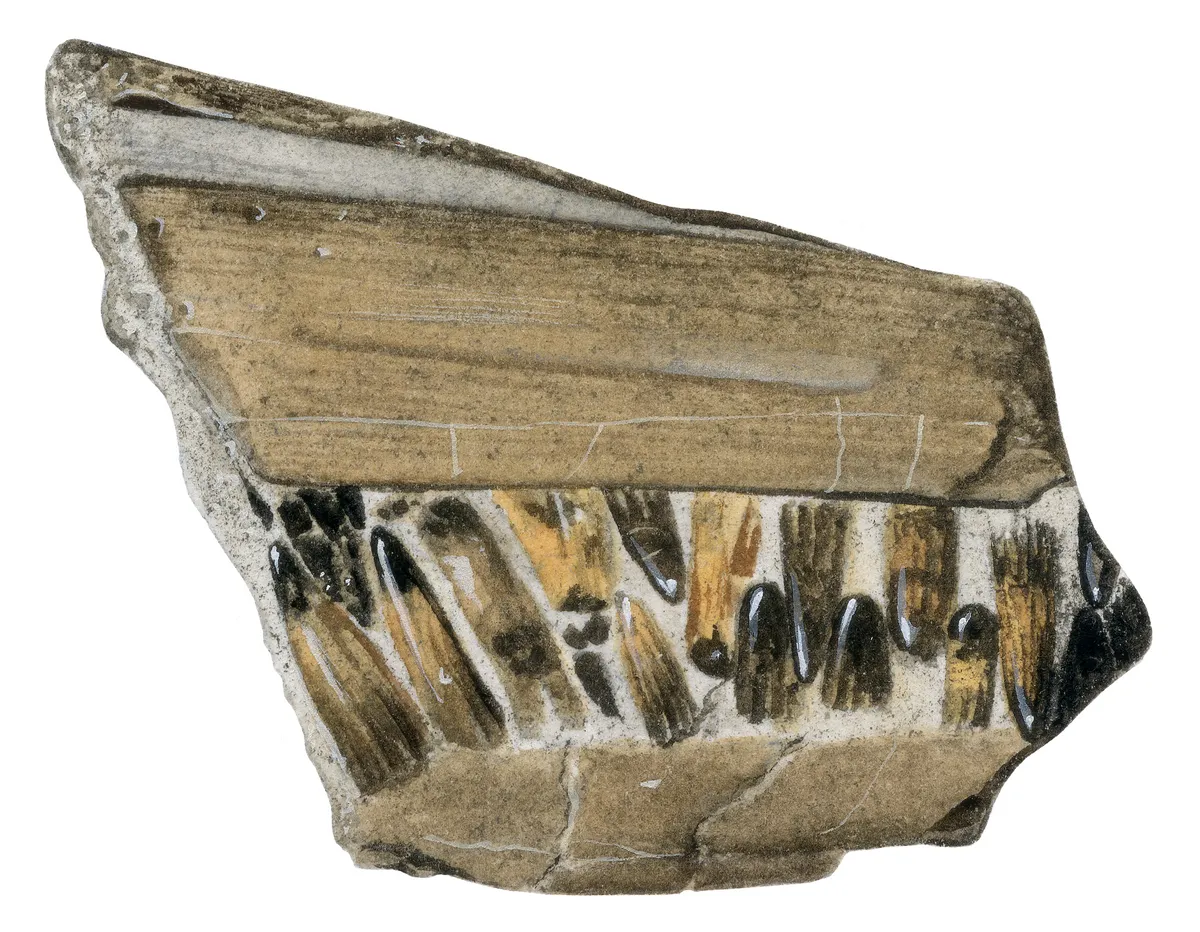
Finding a fossilised dinosaur, or more likely a bone or tooth, is rare but not impossible. More than 25 different species have been found on the Isle of Wight, with others cropping up on the Isle of Skye in Scotland. Look out for dinosaur footprints (trace fossils) too. Giant extinct swimming reptiles, like ichthyosaurs and pleisiosaurs, aren’t strictly dinosaurs, but they are well known from the Jurassic Coast in Devon and Dorset.
Visiting the Jurassic Coast?
Discover memorable walks, go fossil hunting and relaxing on some of Britain's most beautiful beaches with a visit to the spectacular Jurassic Coast in Devon and Dorset.
Echinoids
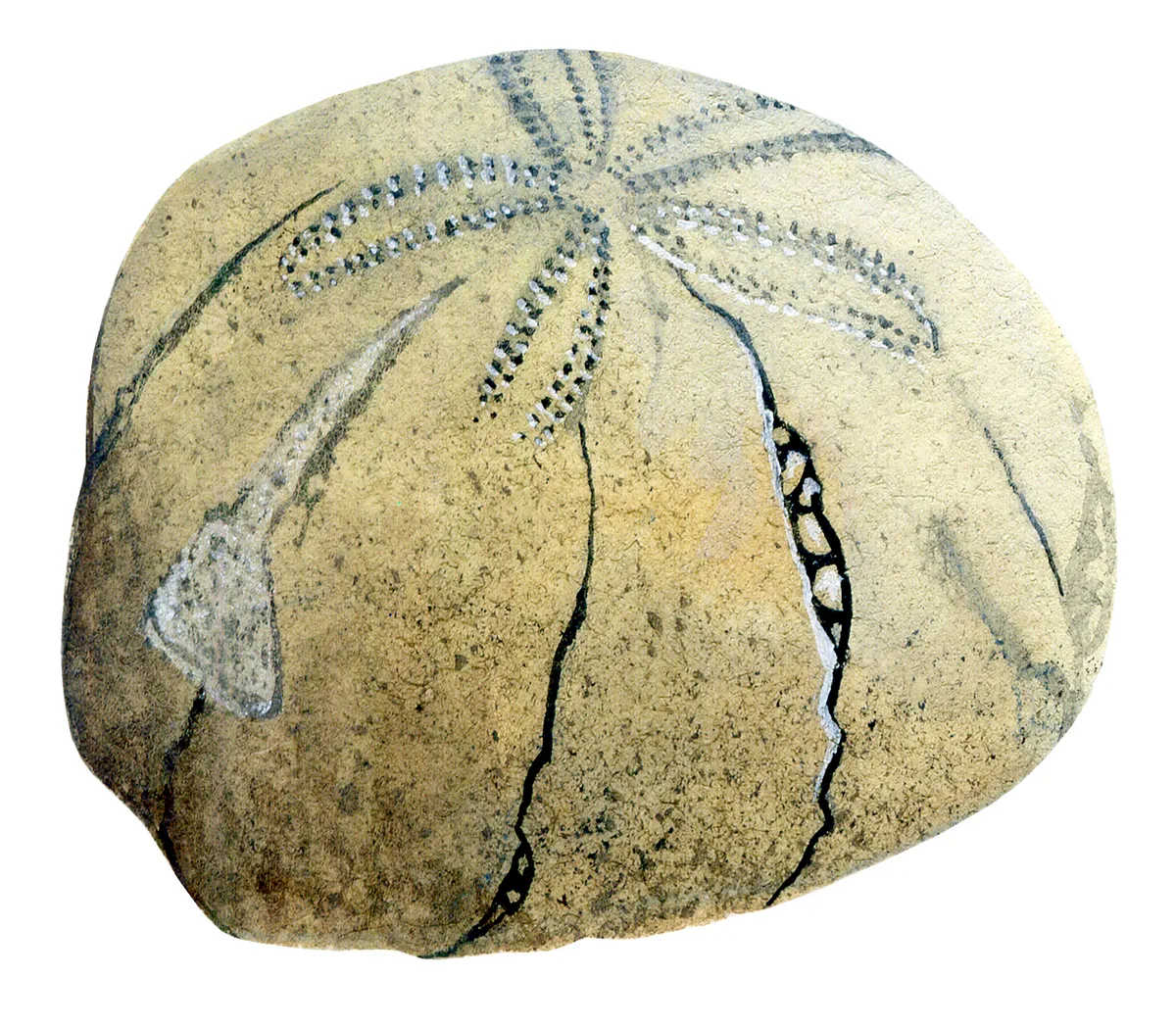
Fossil echinoids – or sea urchins – are usually a few centimetres wide and like modern-day species most would have had spines, but they are rarely found attached. Beaches along the southern coast of England, particularly with chalk cliffs, are a great place to hunt for them. Their shape tells you about how they lived: rounded ones lived on the seafloor, flatter or heart-shaped species burrowed into the sea-bed.
Corals
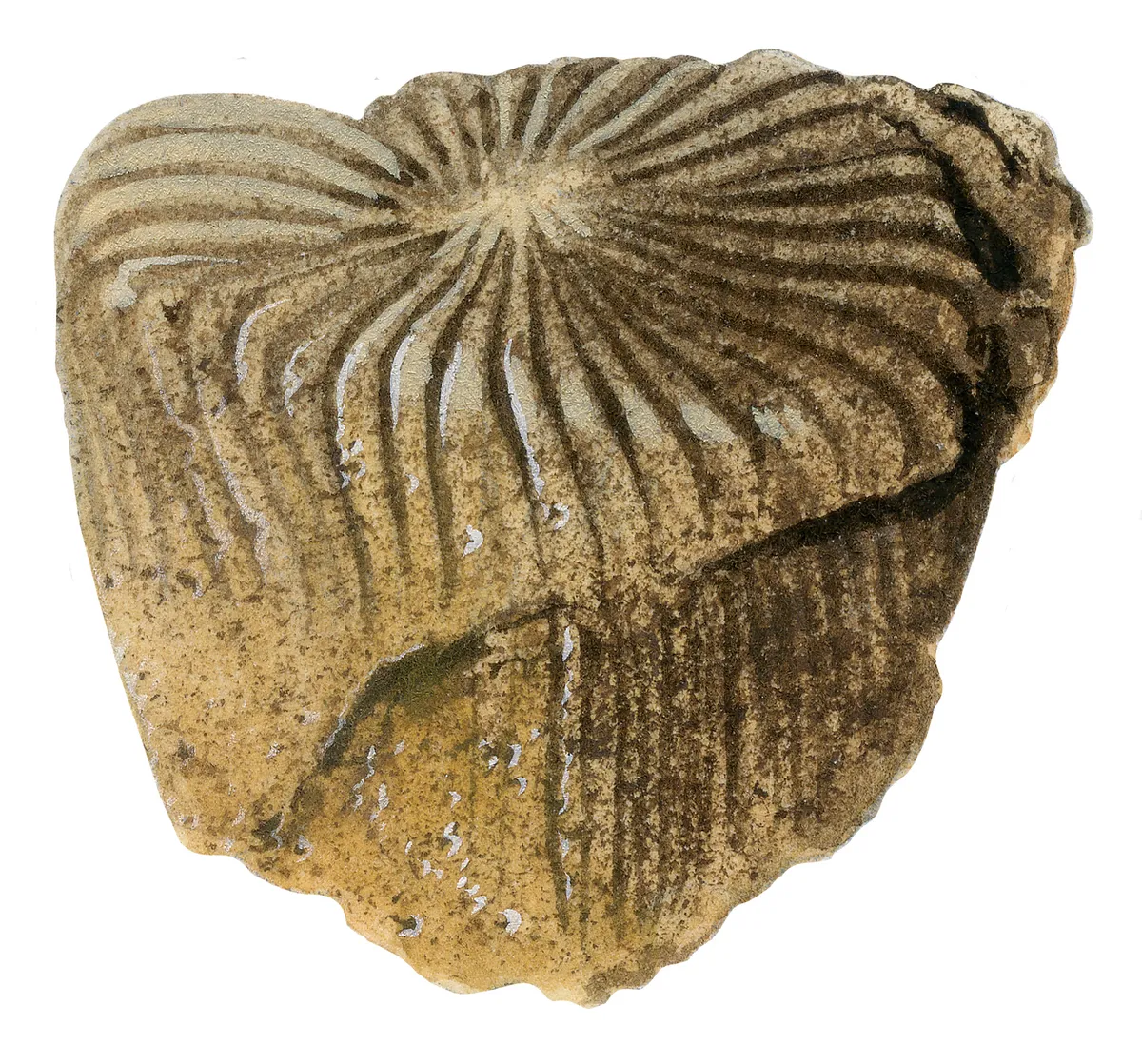
Corals are marine animals that secrete a hard skeleton below a soft, anemone-like top part. In the past, they were important reef builders just as they are today. Various types of corals feature throughout the fossil record, meaning they can be found in many places. As fossils, they can look like a honeycomb structure in a rock or individual ridged cones 2-3 cm wide and 5-10 cm long.
Planning a trip to the coast this winter?
The British coastline has a wild beauty in the colder months but still offers incredible wildlife, views and buckets of fresh air. Our guide looks at the best beaches to visit in the UK in the winter months.
Trilobites
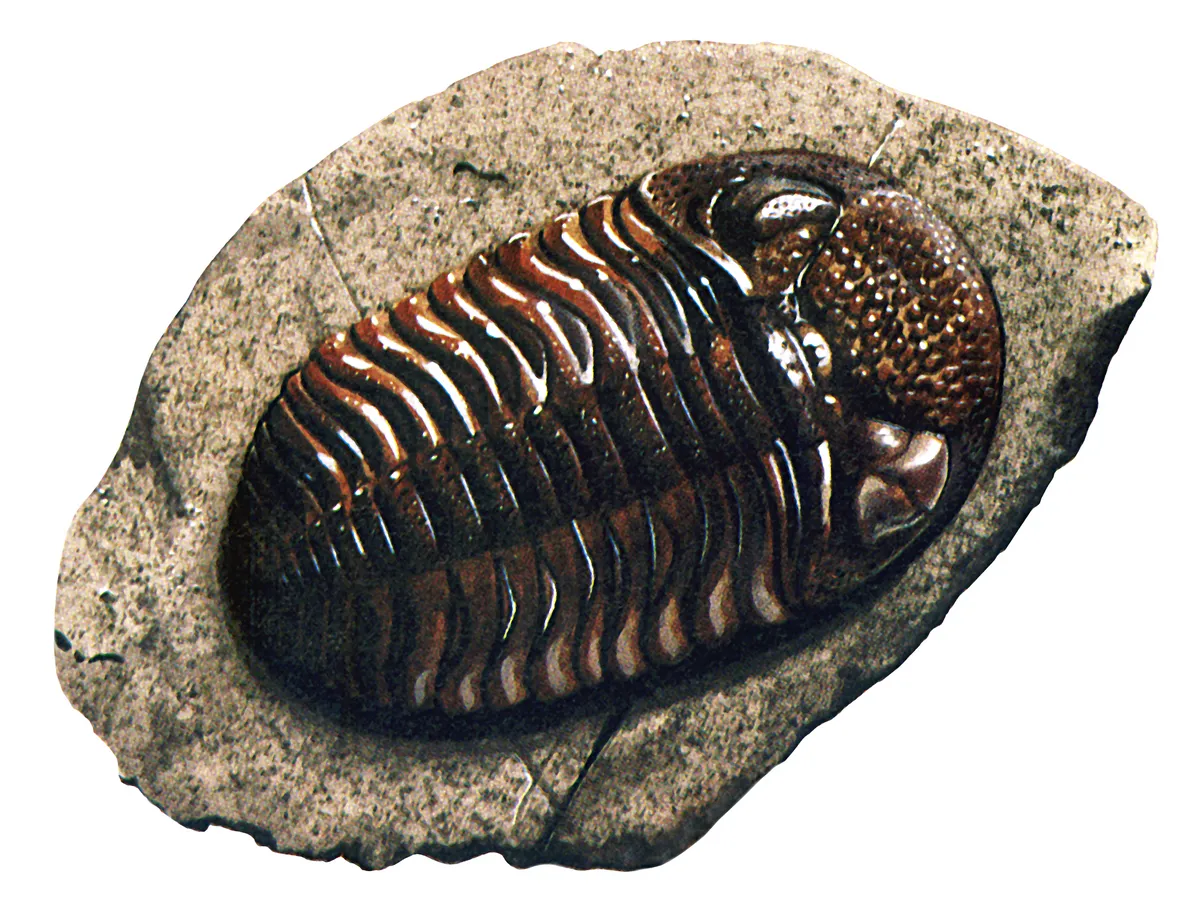
Trilobites are oval shaped bug-like creatures that bear a passing resemblance to giant woodlice, with a segmented body and smoother head. Many different species lived on the ocean floor from about 540 to 250 million years ago. Their hard, outer shell, or exoskeleton, was shed periodically as they grew and most trilobite fossils are pieces of a moulted shell rather than the animal itself.
Graptolites
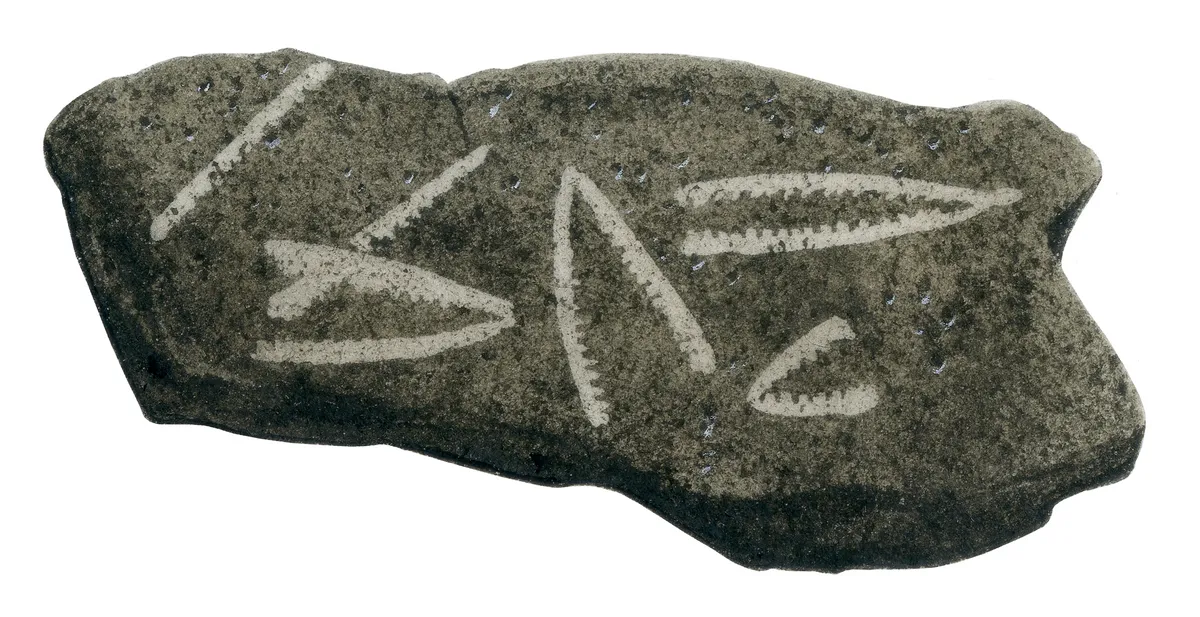
The name ‘graptolite’ means ‘writing on stone’ and these fossils can often resemble shiny pencil markings. Graptolites were colonial animals (many individuals connected together) that drifted in the sea, ranging from a few centimetres up to a metre long. They died out about 370 million years ago. Scotland and Wales are fertile hunting grounds, and the dark shale rocks of Abereiddy Bay in southern Wales are particularly good for graptolite fossils.
On the hunt for seashells?
Britain’s seashores are littered with the shells of bivalves and gastropods. Enhance your next beach walk with our guide to some of the most common seashells found along the British coastline.
